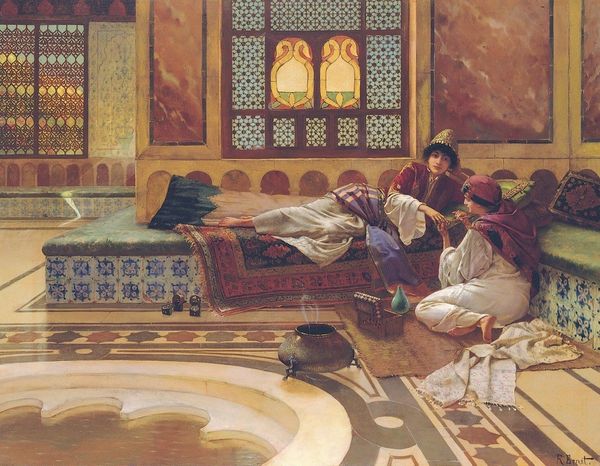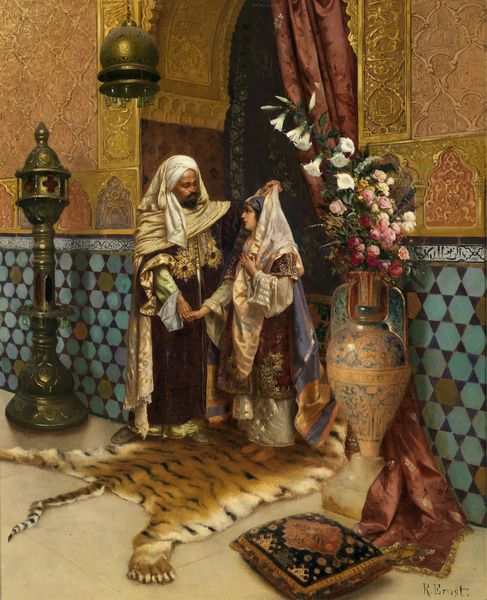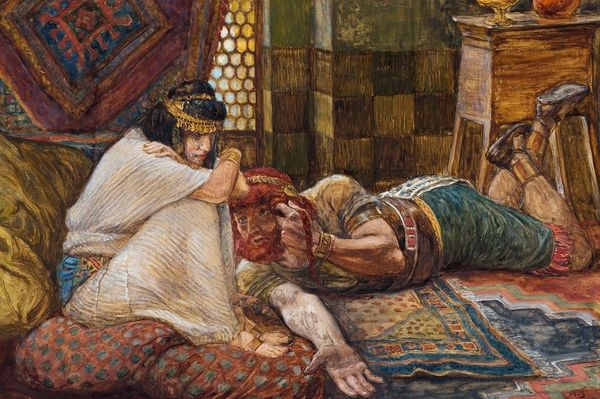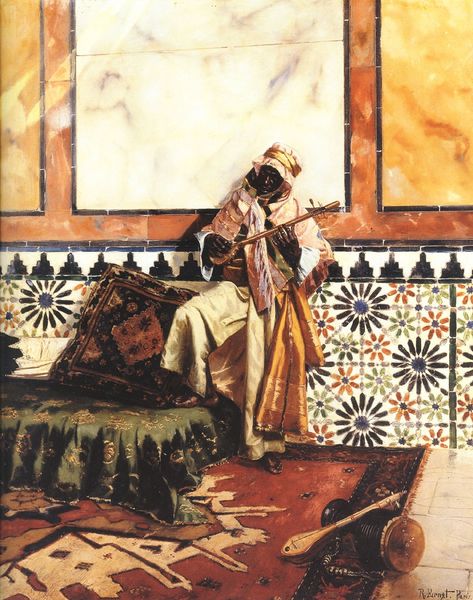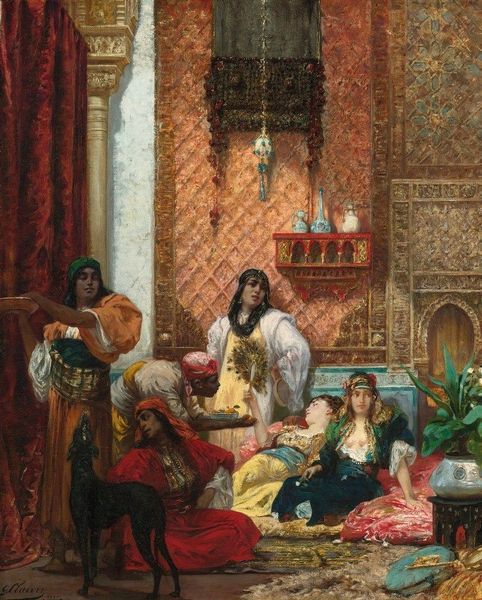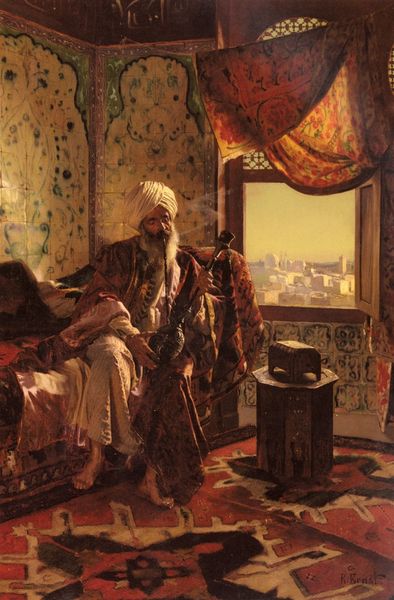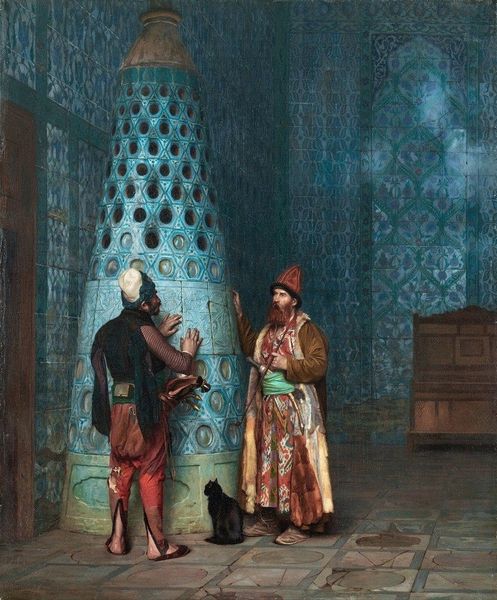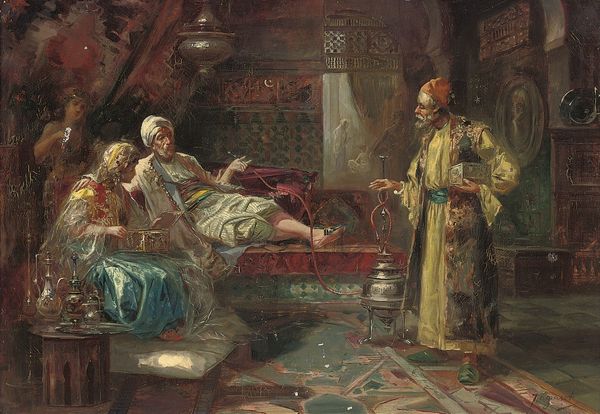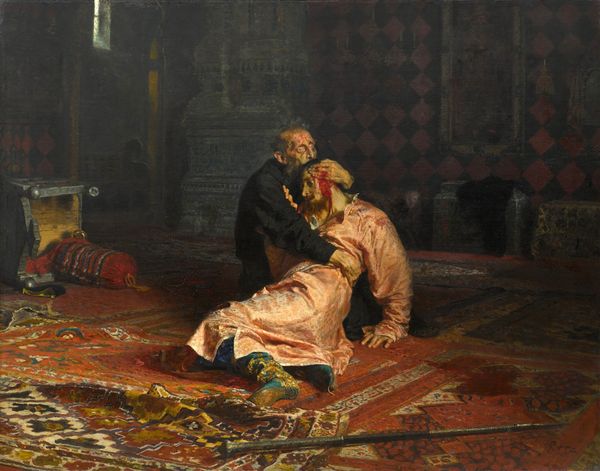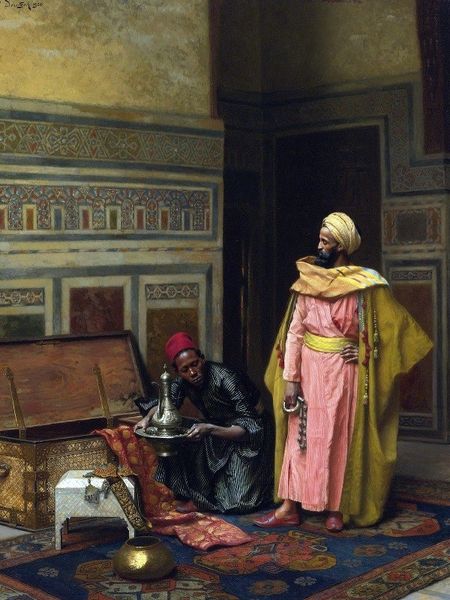
oil-paint
#
portrait
#
oil-paint
#
oil painting
#
romanticism
#
orientalism
#
genre-painting
Copyright: Public Domain: Artvee
Curator: Upon first viewing, the painting strikes me with its sense of languid ease. The interplay of light and shadow creates an atmosphere of stillness. Editor: This painting, titled "Sweet Lullaby," is by Rudolf Ernst and exemplifies the Orientalist style that was quite popular in the 19th century. We can discuss how it sits within that artistic movement and consider what narratives it participates in or pushes against. Curator: Indeed. The arrangement of the figures—one reclining, the other watching—suggests a dynamic, one perhaps of power or intimacy. Note how the cool tones of the upper section contrast with the warmer colors below. Editor: The opulent details speak to both the artist's fascination with and Western fantasies about the "Orient." Consider the significance of the interior space and the exoticized trappings of wealth, such as the tiling, decorative objects, and the tiger skin rug. Curator: Yes, those repeating geometric patterns certainly add a sense of layered complexity to the scene’s flatness, creating depth in their own way. This could reference a desire for capturing intricate design elements specific to particular cultures. But perhaps it falls into appropriation and othering. Editor: I agree that this tension is important to recognize, but the painting's visual construction shouldn’t be completely dismissed. How do the formal elements—line, color, and composition—contribute to the overall effect, and what narrative and representational dynamics are at play in terms of gender and identity. Are the women the artist's primary subjects? What can this artwork teach us about gender in art or colonial art? Curator: The treatment of light, and how it interacts with texture, for example in the women’s robes, emphasizes the painting’s artifice as an artifact of colonialism and Western expansionism, while we observe a highly staged, idealized portrayal of the ‘Orient’. Editor: Perhaps, instead of focusing only on potential faults and representational problematics of colonialism in Ernst’s composition, we also focus on other factors, so our contemporary readings do not override possibilities to enjoy art's technical achievements. It may well also demonstrate a cross-cultural inspiration, in particular the dialogue between design and decorative culture, which moves the picture from its initial, exotic and essentialising characterisation. Curator: Perhaps we need more critical discussion around who "Sweet Lullaby" was made for, which I suspect were European male viewers who viewed it as an extension of Western hegemony. It reveals a culture seen through an external perspective, ripe with biases. Editor: But ultimately we can consider how artworks act as sources of visual delight despite representing cultural misconceptions. By discussing Rudolf Ernst's approach to colour and texture, along with considering this painting's history, it becomes a complex, thought-provoking study.
Comments
No comments
Be the first to comment and join the conversation on the ultimate creative platform.
